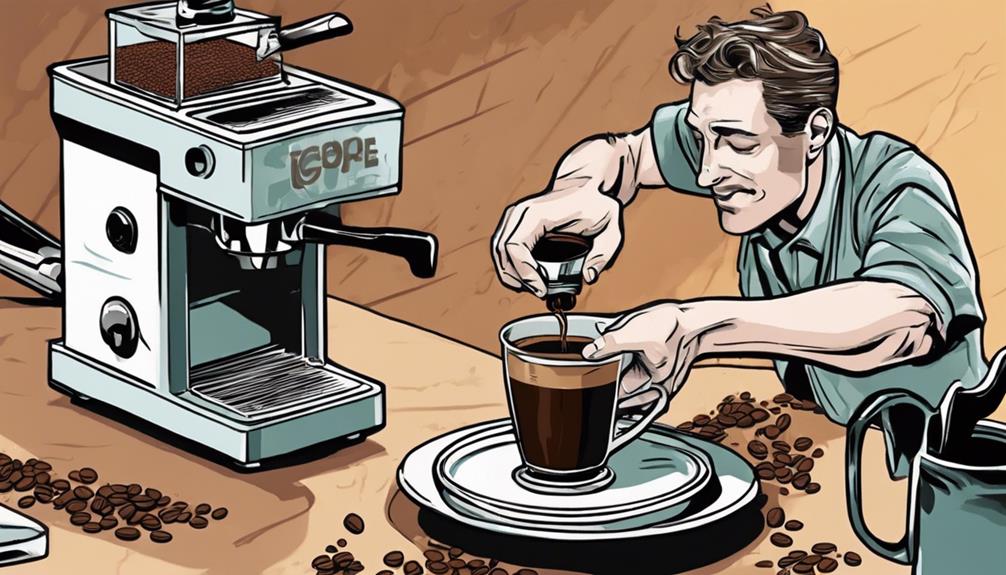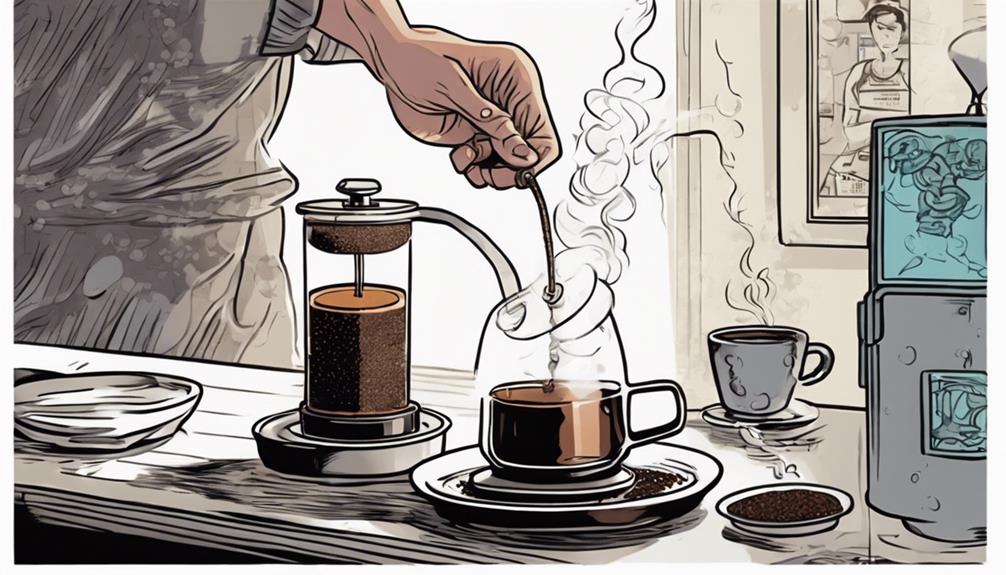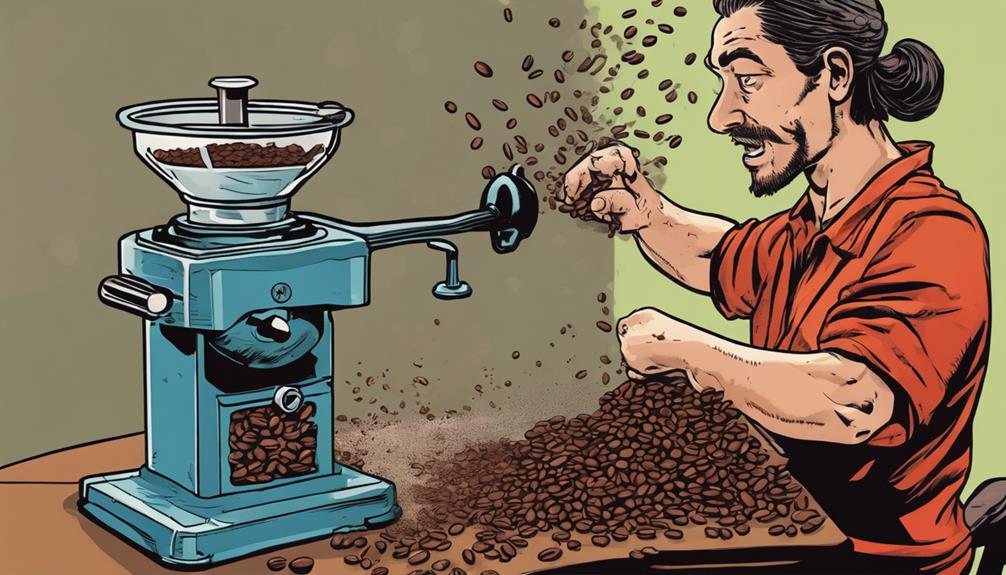To fine-tune your coffee leveler for the perfect brew, start by testing different depth configurations to regulate extraction. Utilize a distribution tool to ensure even grounds distribution in the portafilter. Maintaining a well-balanced espresso extraction is crucial for improving the quality of your shots. The amount of tamping pressure applied affects extraction, so it is important to find the right balance. The Jack Leveler allows for precise customization with close to 50 depth options. Keeping up with regular maintenance is key for longevity. Experiment with various espresso tools to achieve optimal results. Remember, honing your skills in adjusting your leveler can take your espresso-making abilities to the next level.
Key Takeaways
- Experiment with different depth settings for optimal extraction results.
- Use the measurement scale for precise adjustments.
- Turn the leveler lightly to avoid over-compression.
- Clean the leveler after each use for longevity.
- Store the leveler in a dry place to prevent damage.
Importance of Proper Leveler Adjustment
Adjusting your coffee leveler correctly is fundamental for achieving consistent and flavorful espresso shots. Distribution tools, like levelers, play an important role in guaranteeing that the coffee grounds are evenly spread within the portafilter.
By adjusting the leveler depth, you can control the compression of the puck, which directly impacts the extraction process. This adjustment is crucial to preventing issues such as channeling and uneven extraction, leading to a more balanced and consistent shot of espresso.
Experimenting with different depth settings on the leveler allows you to fine-tune your brewing process according to your preferences. Finding the right depth setting can be a trial-and-error process, but once you discover the perfect adjustment, you'll notice a significant improvement in the quality of your espresso.
A well-adjusted leveler not only enhances the taste of your coffee but also guarantees that each shot is brewed to perfection, making your espresso experience truly satisfying.
Tips for Even Coffee Distribution
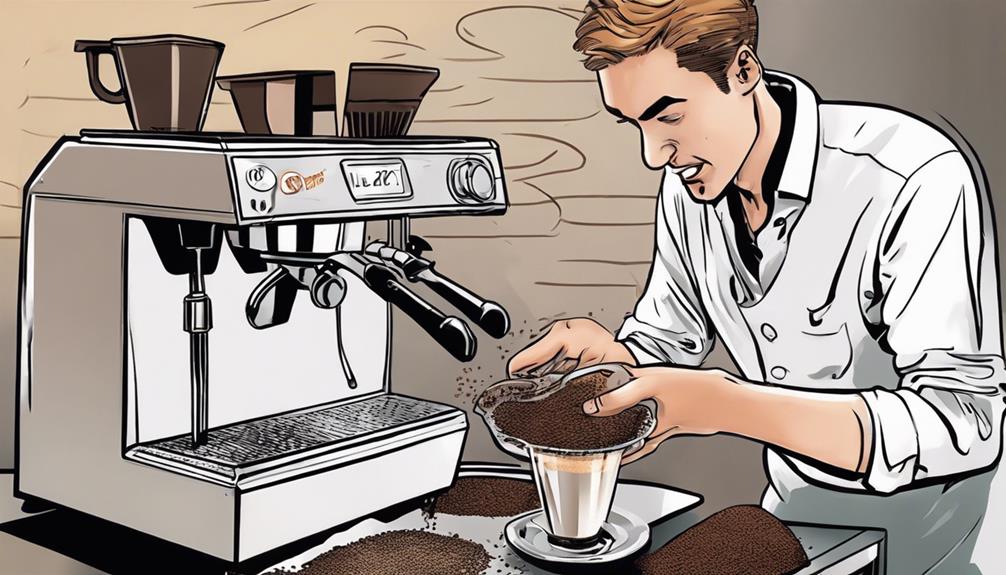
For achieving ideal coffee extraction, ensuring uniform distribution of grounds is key. To achieve this, consider using a distribution tool like a WDT tool. This tool helps evenly disperse the coffee grounds within the filter basket, leading to a more consistent extraction.
Additionally, when preparing your coffee puck, tapping the portafilter and spinning the leveler can aid in distributing the grounds evenly throughout the puck.
Another helpful tip is to whisk the grinds in the dosing cup before dumping them into the portafilter. This technique guarantees that the grounds are properly distributed before tamping.
Furthermore, choosing a 20g VST ridgeless basket can contribute to a tidy and uniform puck, facilitating even extraction.
Achieving Balanced Espresso Extraction
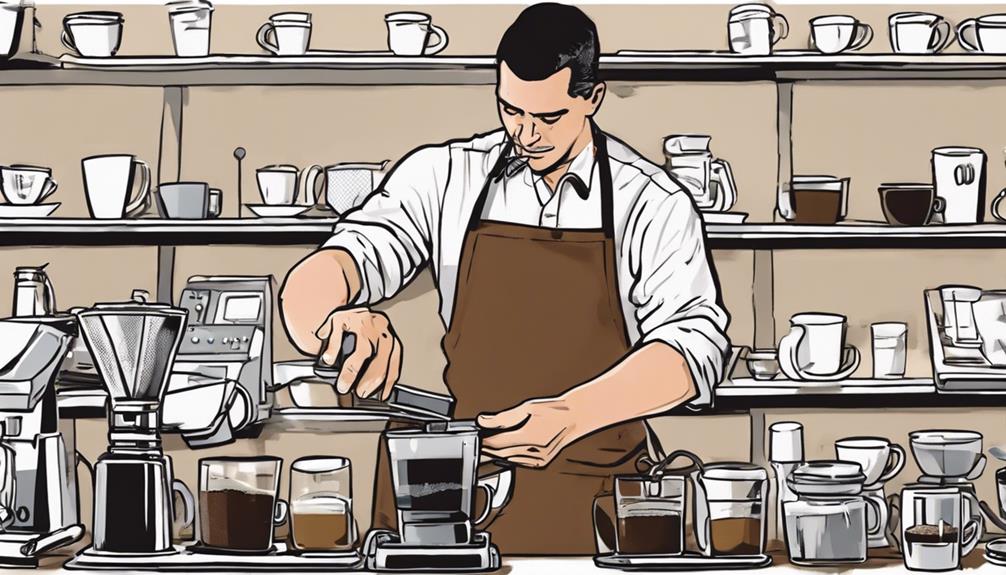
To achieve a balanced espresso extraction, ensuring proper adjustment of your coffee leveler depth is crucial for maintaining a level coffee bed and reducing the risk of channeling during extraction. Asso Jack, finding the right depth setting for your coffee leveler can significantly influence the quality of your espresso shot. Experimenting with different depth adjustments allows for customization based on coffee type and grind size. Consistent depth adjustments with your coffee leveler can lead to a more uniform extraction and enhance overall espresso quality. Below is a table highlighting the importance of adjusting your coffee leveler depth:
| Adjustment Level | Impact on Extraction |
|---|---|
| Shallow Depth | Uneven extraction and potential channeling. |
| Moderate Depth | Improved evenness in the puck, leading to a balanced extraction. |
| Deep Depth | Risk of over-extraction and bitterness in the shot. |
Understanding Tamping Pressure Impact
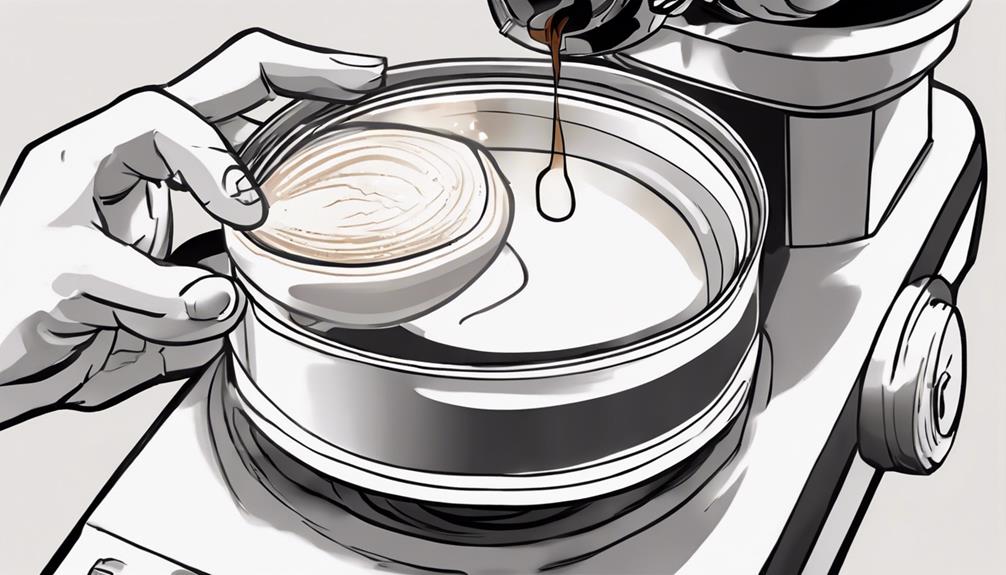
Understanding how tamping pressure impacts espresso extraction is vital for achieving consistent and flavorful shots. When you apply tamping pressure to the coffee grounds in the portafilter, you're influencing the density and evenness of the coffee puck. Consistent tamping pressure is crucial as it ensures that water flows uniformly through the grounds, leading to optimal extraction and a well-rounded flavor profile in your espresso.
It's important to note that adjusting the tamping pressure based on factors like grind size and basket type can greatly enhance the quality of your shots. If you tamp too hard, you risk over-extraction, resulting in a bitter taste. Conversely, tamping too lightly may cause under-extraction, leading to a sour or weak shot.
Key Features of the Jack Leveler
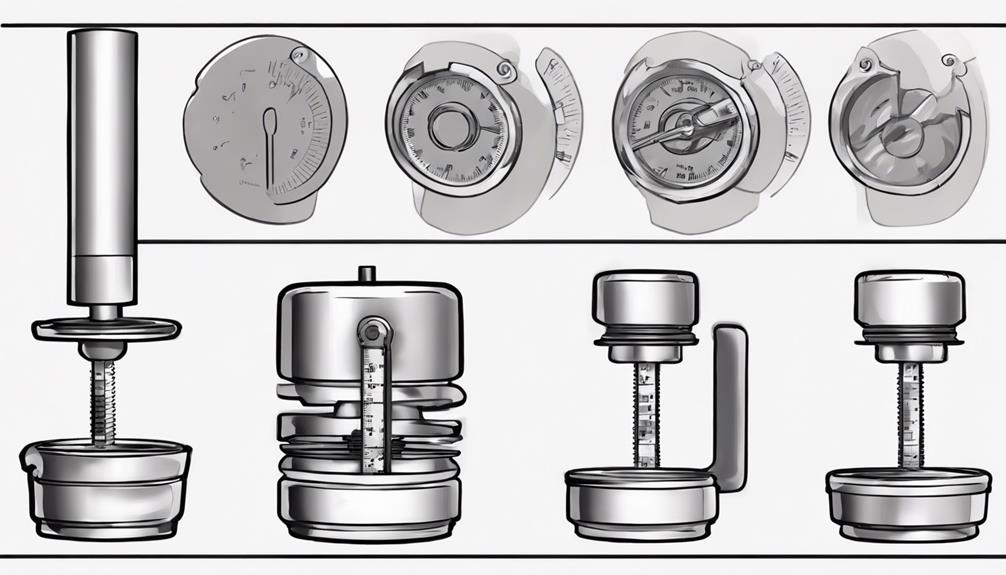
Adjusting your coffee leveler is key to maximizing the distribution and tamping process for your espresso shots. The Jack Leveler boasts a metal leveling head with four ridges designed for even distribution of coffee grounds in the portafilter. Offering nearly 50 depth adjustment options with 11 clicks per rotation, this tool allows you to finely customize your coffee grounds to achieve the perfect extraction.
To adjust the Jack Leveler, simply turn the handle clockwise to spin the leveling head and set your desired depth. This ease of customization guarantees that you can tailor your coffee grounds precisely to your preferences, resulting in consistently great espresso shots.
Moreover, the Jack Leveler serves a dual function, acting not only as a coffee distribution tool but also as a tamper. This dual functionality streamlines your espresso preparation process, making it efficient and convenient for daily use.
Remember to maintain your Jack Leveler by wiping it clean after each use and regularly checking for any clogging in the ridges to ensure top-notch performance.
Dual Functionality Benefits Explained
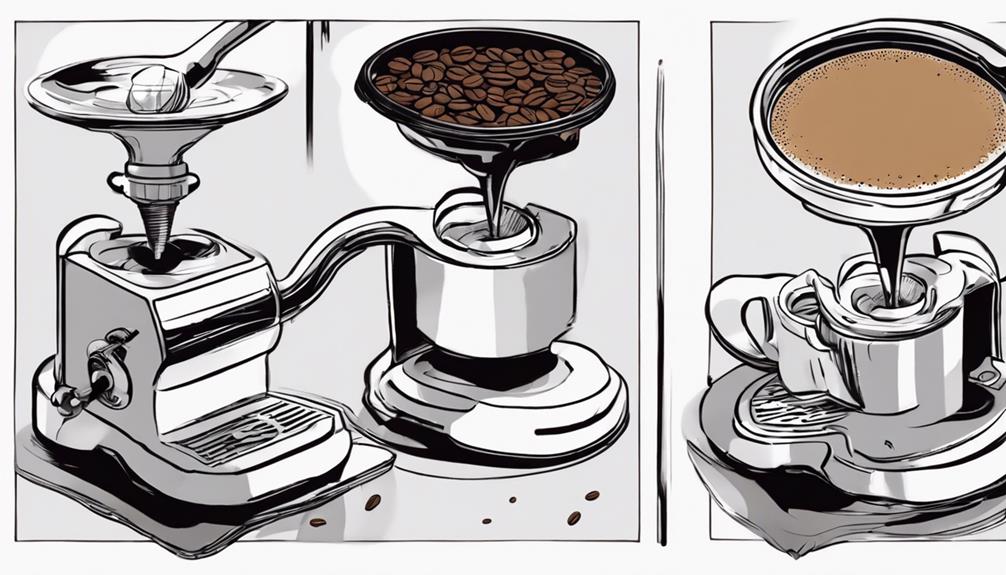
You'll appreciate the Jack Leveler's dual-purpose benefits, saving time and effort with its combined distribution and tamping functions.
This tool streamlines your coffee preparation process, ensuring a firm puck without the need for extra tamping.
Its versatile design offers nearly 50 depth options for precise coffee distribution, enhancing shot consistency and overall espresso quality.
Dual-Purpose Tool Benefits
Why does the Jack Leveler stand out among coffee tools for its dual-purpose functionality?
The Jack Leveler excels because it combines the roles of a coffee distribution tool and tamper in one convenient device. By utilizing the Jack Leveler, you can effortlessly achieve a firm puck without the need for additional tamping.
This dual-function tool offers around 50 depth options, complete with a handy measurement scale for precise adjustments.
Not only does it streamline the coffee-making process, but it also enhances shot consistency by minimizing channeling, ultimately improving the quality of your espresso.
The Jack Leveler's ability to handle two essential espresso preparation tasks efficiently makes it a must-have tool for any coffee enthusiast seeking convenience and consistency in their brewing routine.
Say goodbye to the hassle of switching between multiple tools and embrace the simplicity and effectiveness of the Jack Leveler's dual-purpose design.
Efficiency in Preparation
The efficiency of the Jack Leveler shines through its dual functionality as a coffee distribution tool and tamper, offering seamless preparation for espresso enthusiasts.
By combining these two essential steps into one tool, the Jack Leveler streamlines the coffee-making process, allowing you to achieve a firm puck without the need for additional tamping. This not only saves time but also ensures even extraction for a balanced and flavorful espresso shot.
With its simple yet effective design, the Jack Leveler enables quick adjustments, making it a convenient choice for both baristas and home users. The tool's nearly 50 depth options and measurement scale provide precise control over the coffee distribution, resulting in ideal extraction and enhanced shot consistency.
Whether you use it as a distributor or a tamper, the Jack Leveler minimizes channeling, leading to better espresso quality with every brew.
Upgrade your coffee preparation routine with the Jack Leveler and experience the benefits of efficient, high-quality espresso-making.
Convenient Espresso Accessory
Embodying versatility and efficiency, the Asso Coffee Jack Leveler seamlessly integrates the functions of a coffee distributor and tamper, making it a convenient and practical accessory for espresso enthusiasts.
This dual-functionality tool simplifies the coffee preparation process by allowing you to level the coffee grounds in the filter basket and then tamp them down with the same device.
The option to tamp after leveling provides flexibility in your brewing technique, ensuring a consistent and even coffee puck for a perfect shot every time.
With its user-friendly design, the Jack Leveler enables quick adjustments to suit your preferences. Offering nearly 50 depth options and a handy measurement scale, you can precisely set the leveler to achieve your ideal brew.
By reducing channeling and promoting an evenly compressed coffee bed, this accessory enhances shot consistency and quality.
Upgrade your espresso experience with the Asso Coffee Jack Leveler's convenient dual functionality.
Maintenance Tips for Longevity
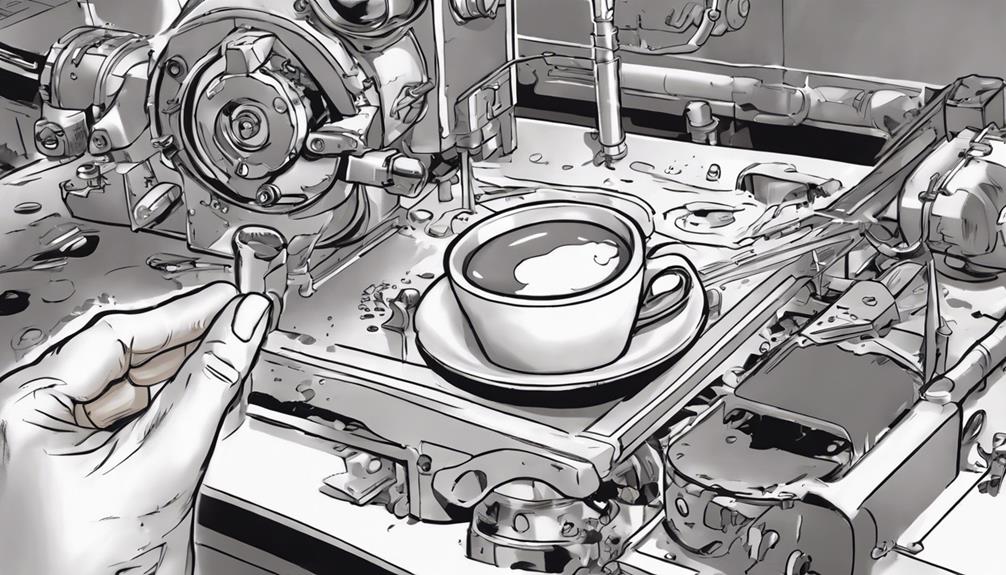
For peak longevity, prioritize regular maintenance of your coffee leveler to uphold its performance and durability.
After each use, make it a habit to wipe the leveler clean to prevent coffee residue buildup.
Check the ridges for any clogging and make sure they're thoroughly cleaned to maintain top functionality.
When not in use, store your Jack Leveler in a dry place to prevent rust and preserve its quality over time.
It's essential to avoid using harsh chemicals during cleaning as they can damage the integrity of the leveler.
By following these maintenance tips diligently, you can ensure the durability and consistent performance of your coffee leveler.
Remember, regular maintenance is key to getting the finest brews and extending the lifespan of your beloved espresso accessory.
Keep up with these simple steps, and your coffee leveler will continue to serve you well for a long time to come. In addition to keeping up with the maintenance of your coffee leveler, make sure to also regularly clean and lubricate the moving parts to ensure smooth operation. Additionally, consider adjusting manual coffee grinder to ensure the grind is consistent and the right coarseness for your preferred brewing method. By taking these steps, you can continue to enjoy delicious, perfectly leveled coffee for years to come.
Exploring Espresso Tools Variety
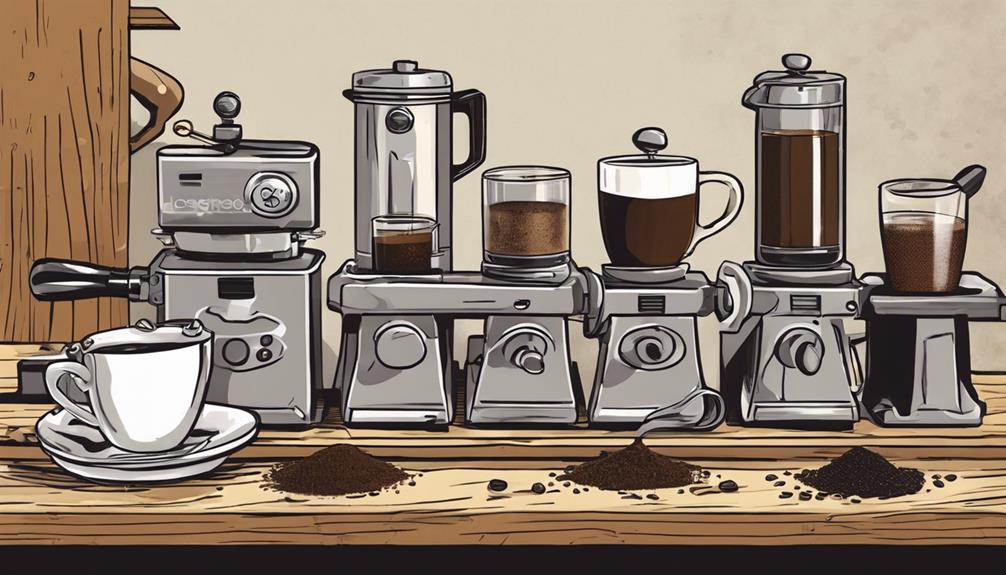
Uncover the diverse array of espresso tools available, each customized to elevate your coffee-making experience with accuracy and quality.
Espresso tools come in various sizes, such as 58mm, 54mm, 53mm, and 51mm, to fit different portafilters. When using precision filter baskets, a 58.6mm tamper may be necessary for a snug fit and even compression, ensuring prime extraction.
High-end tools like tampers, levelers, and distributors are specifically crafted to enhance the quality of espresso shots by providing consistency and precision in the brewing process.
Precision filter baskets are crucial components, labeled for size and features to ensure minimal slop and precise dosing, resulting in a more controlled extraction.
Additionally, tools like levelers with nanotech treatment not only guarantee easy cleaning but also uphold precision in espresso preparation, contributing to a more efficient and enjoyable coffee-making experience.
Experimenting with different espresso tools can help you discover the perfect combination for achieving the finest results in your espresso brewing journey.
Maximizing Tool Performance Efficiency
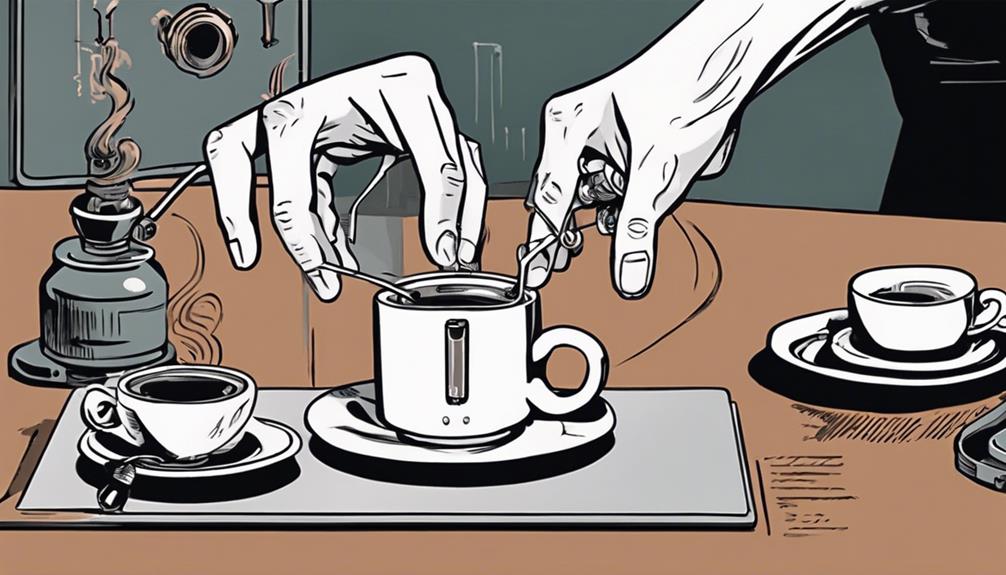
To enhance the efficiency of your coffee tool performance, adjust the depth of your coffee leveler using the provided measurement scale for consistent distribution.
By turning the leveling head with 11 clicks per rotation, you can access nearly 50 depth options, enabling precise adjustments to optimize coffee puck compression.
Utilize the scale on the leveler to make sure each setting is consistent, enhancing the quality of your espresso extractions.
When using the regular tamper, lightly turn the leveler clockwise within the portafilter. This technique helps distribute the coffee grounds evenly without leaving marks that may result in channeling during the brewing process.
Remember to clean the leveler after each use to maintain hygiene and prevent any clogging in the ridges, ensuring best performance with every brew.
For long-lasting efficiency in your coffee preparation routine, store the Jack Leveler in a dry place. This practice helps prevent rust or damage, preserving the tool's functionality for many enjoyable cups of coffee ahead.
Engaging With Espresso Enthusiasts
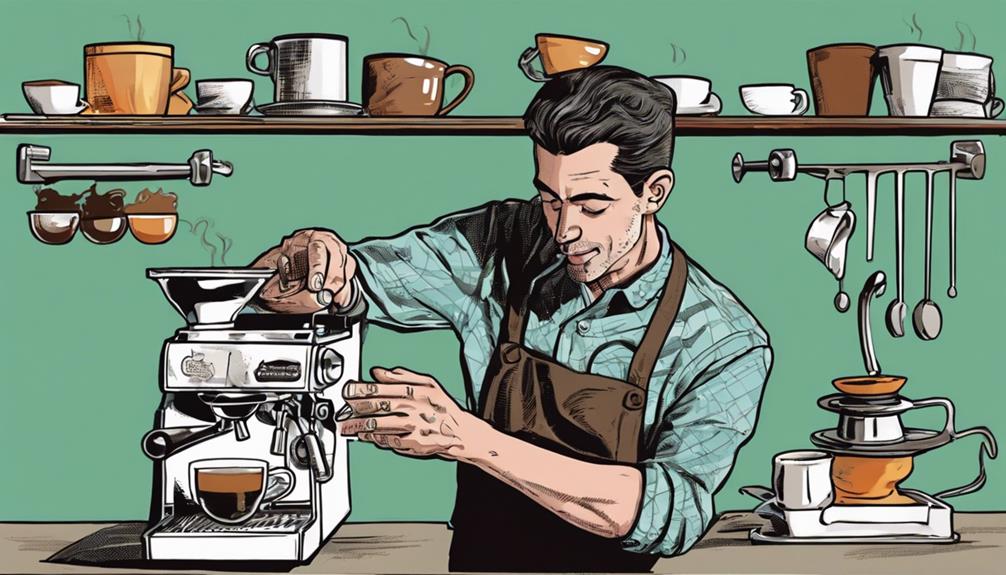
Engage with fellow espresso enthusiasts by sharing your brewing experiences and techniques, fostering a vibrant and supportive community.
Encourage interactions and discussions to exchange valuable insights and tips on espresso tools and accessories.
Your active participation adds depth and excitement to the espresso community, creating a dynamic space for learning and growth.
Engaging Espresso Community
Connecting with fellow espresso enthusiasts online or in person can enhance your coffee experience and knowledge. Engaging with the espresso community allows you to stay updated on the latest trends and techniques.
When discussing topics like beans age with other enthusiasts, you can gain valuable insights into how aging affects the flavor profile of your espresso. Online forums and social media groups dedicated to espresso, such as Reddit's r/espresso or specialty coffee forums, provide platforms for discussions, advice, and recommendations from experienced individuals.
Attending local coffee events, workshops, barista competitions, or coffee festivals is another way to immerse yourself in the espresso community. These events offer opportunities to connect with like-minded individuals and learn from experts in the field.
Collaborating with local coffee shops or roasteries can also provide hands-on experience and knowledge exchange, further deepening your understanding of espresso brewing techniques. By actively engaging with the espresso community, you can expand your coffee horizons and refine your brewing skills.
Sharing Brewing Experiences
Interact with fellow espresso enthusiasts to exchange brewing experiences and refine your coffee leveler techniques for best results. Sharing your journey with others who have a passion for espresso can provide valuable insights and help you enhance your brewing skills. By discussing your experiences and learning from theirs, you can discover new approaches and techniques to improve the quality of your espresso shots.
When engaging with espresso enthusiasts, remember to share what you've been using and inquire about their setups as well. Below is a table illustrating the benefits of sharing brewing experiences:
| Benefits of Sharing Brewing Experiences |
|---|
| Exchange valuable tips and tricks |
| Discover new techniques and methods |
| Troubleshoot issues collaboratively |
| Explore innovative brewing approaches |
| Build a supportive network of coffee lovers |
Espresso Enthusiasts' Interactions
Connect with like-minded espresso enthusiasts in online forums and social media groups to share valuable tips and tricks for enhancing your espresso brewing skills. Engaging with others who share your passion for espresso can provide new insights and perspectives that can elevate your brewing experience.
When interacting with espresso enthusiasts, make sure to:
- Participate actively: Join discussions, ask questions, and contribute your own expertise to create a vibrant and supportive community of espresso lovers.
- Attend events and workshops: Take advantage of opportunities to connect with fellow enthusiasts in person, exchange ideas, and deepen your knowledge of espresso brewing techniques.
- Collaborate with experts: Seek out baristas and coffee professionals to learn from their experience, gather insights on advanced brewing methods, and stay updated on the latest trends in the world of espresso.
Frequently Asked Questions
Do You Need to Tamp After Leveling?
You don't have to tamp after leveling, but some prefer a light tamp for extra puck compression. Tools like the Jack Leveler create a firm puck without additional tamping. Experiment to discover the best approach for your espresso brewing.
How Does a Coffee Leveler Work?
To work efficiently, a coffee leveler evenly distributes grounds in the portafilter, forming a compressed puck for best extraction. Its leveling head with ridges guarantees uniformity, reducing channeling. Adjusting its depth controls puck compression, impacting extraction.
Is a Coffee Leveler Necessary?
A coffee leveler isn't necessary, but it can enhance your espresso game. It guarantees an even coffee bed, reducing channeling for better extraction. For precision shots and control over brewing, adjusting the leveler is key.
How to Set Coffee Distribution Tool?
To set your coffee distribution tool, place it in the portafilter. Lightly turn clockwise to adjust the depth for even extraction. Avoid marks in the grounds. Enhance shot consistency by customizing your tool for the perfect brew.
Conclusion
Now that you've mastered the art of adjusting your coffee leveler, you're ready to take your espresso game to the next level.
Just like a skilled artist fine-tuning their brush strokes, your precision in distribution and extraction will result in a masterpiece of a brew every time.
So go ahead, grab your tools, and let your passion for espresso shine through in every cup you create.
The perfect brew is just a leveler adjustment away!
